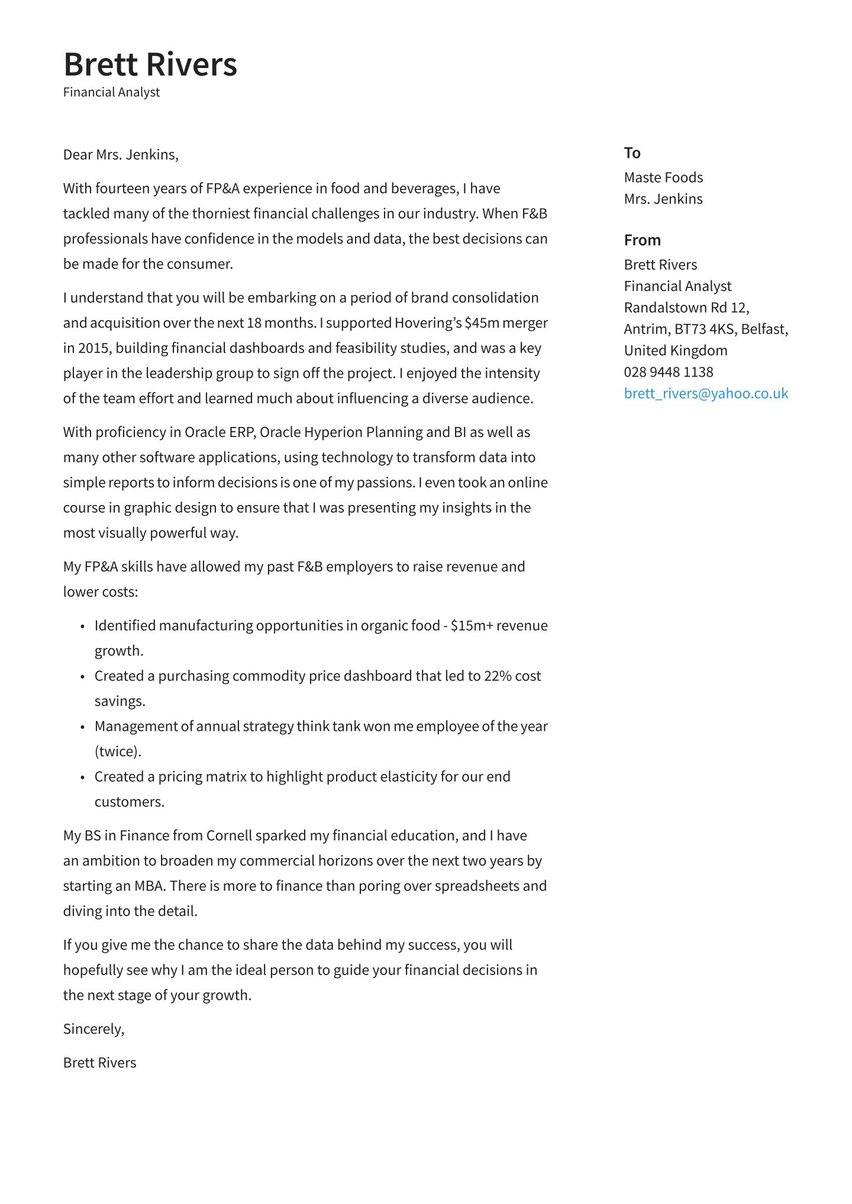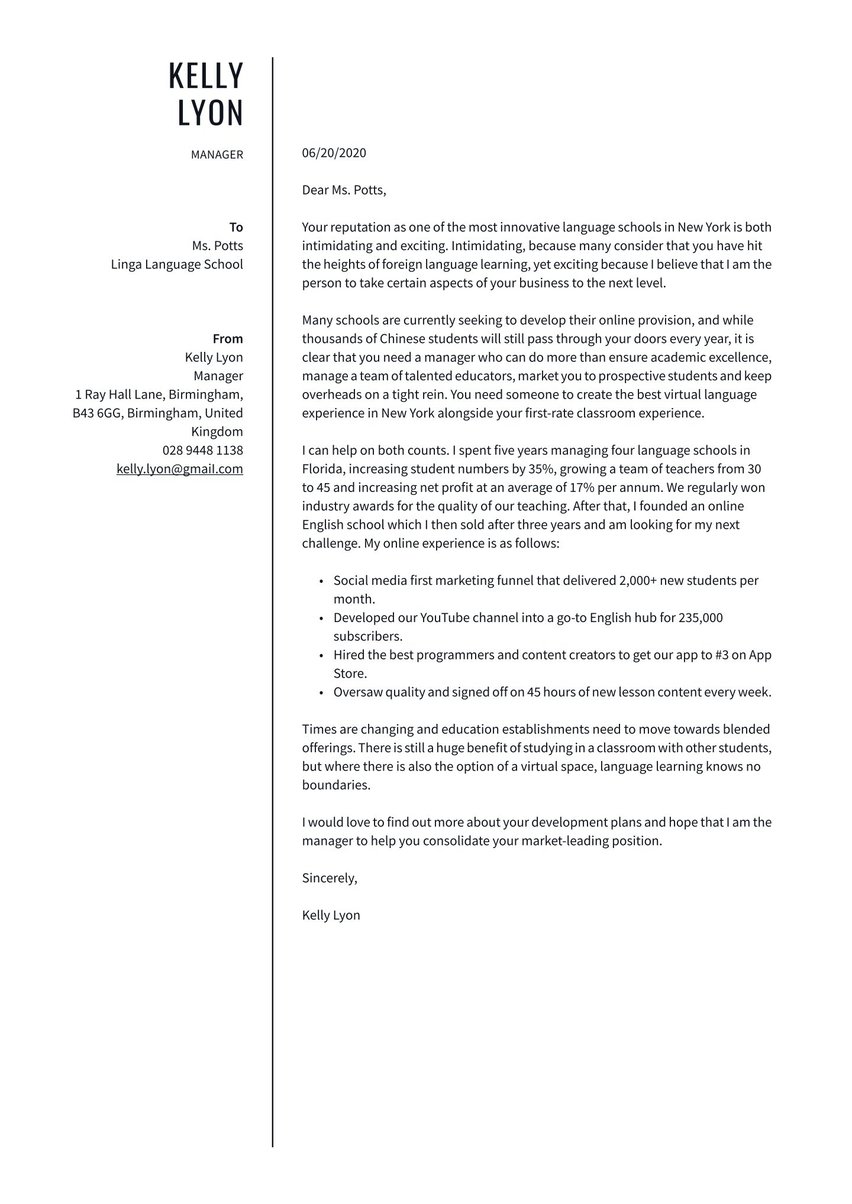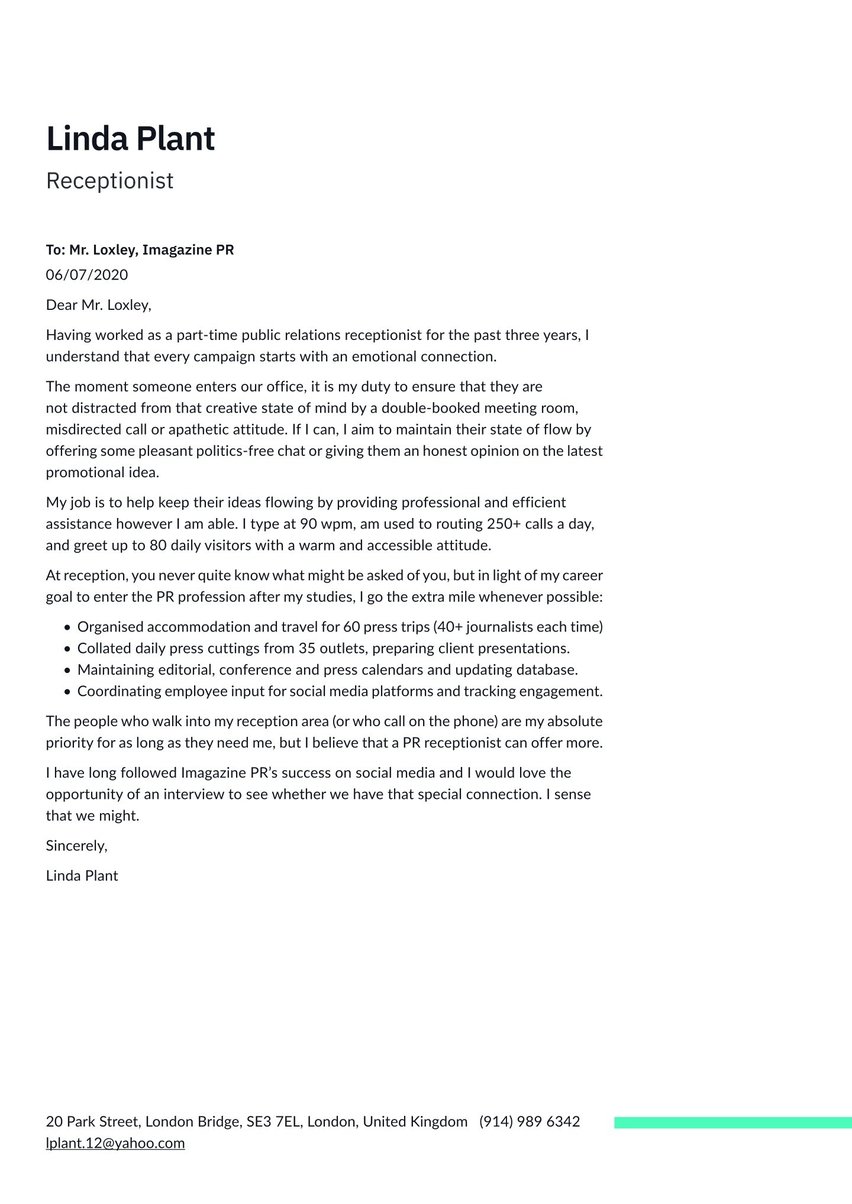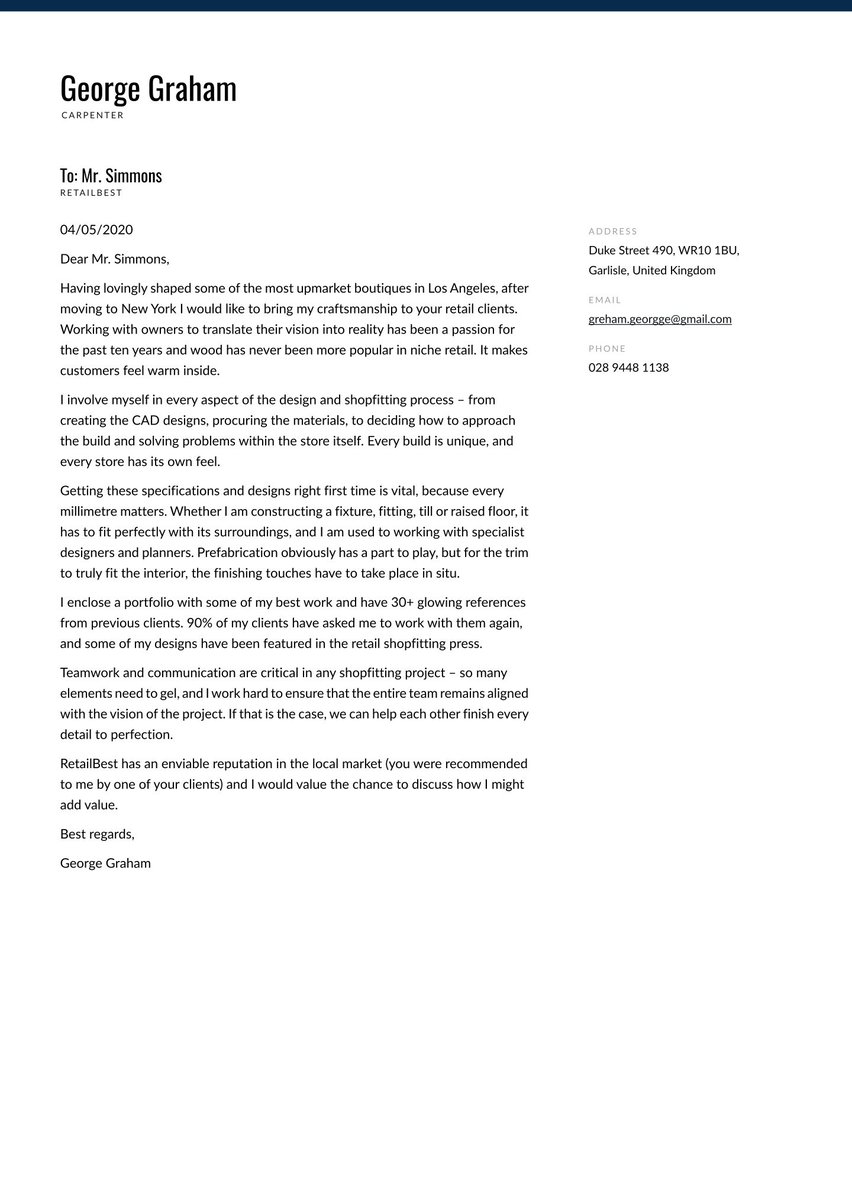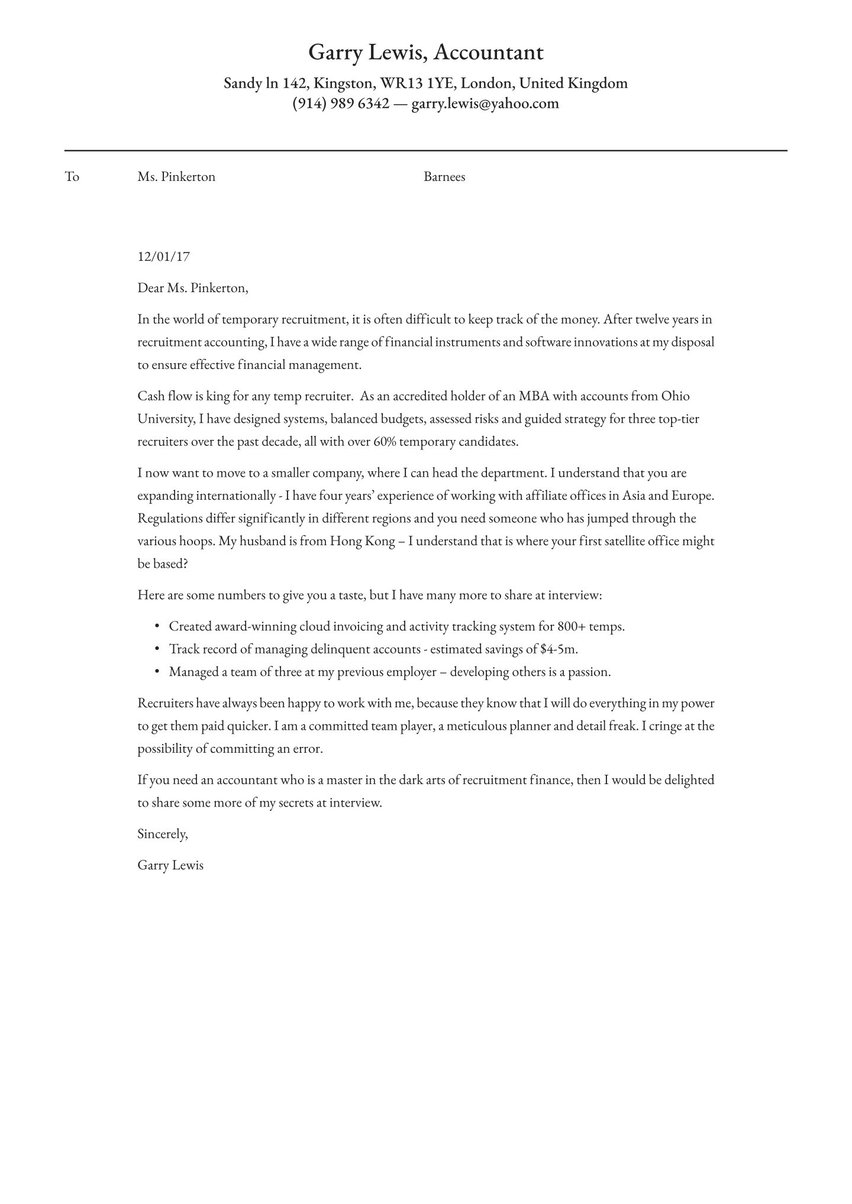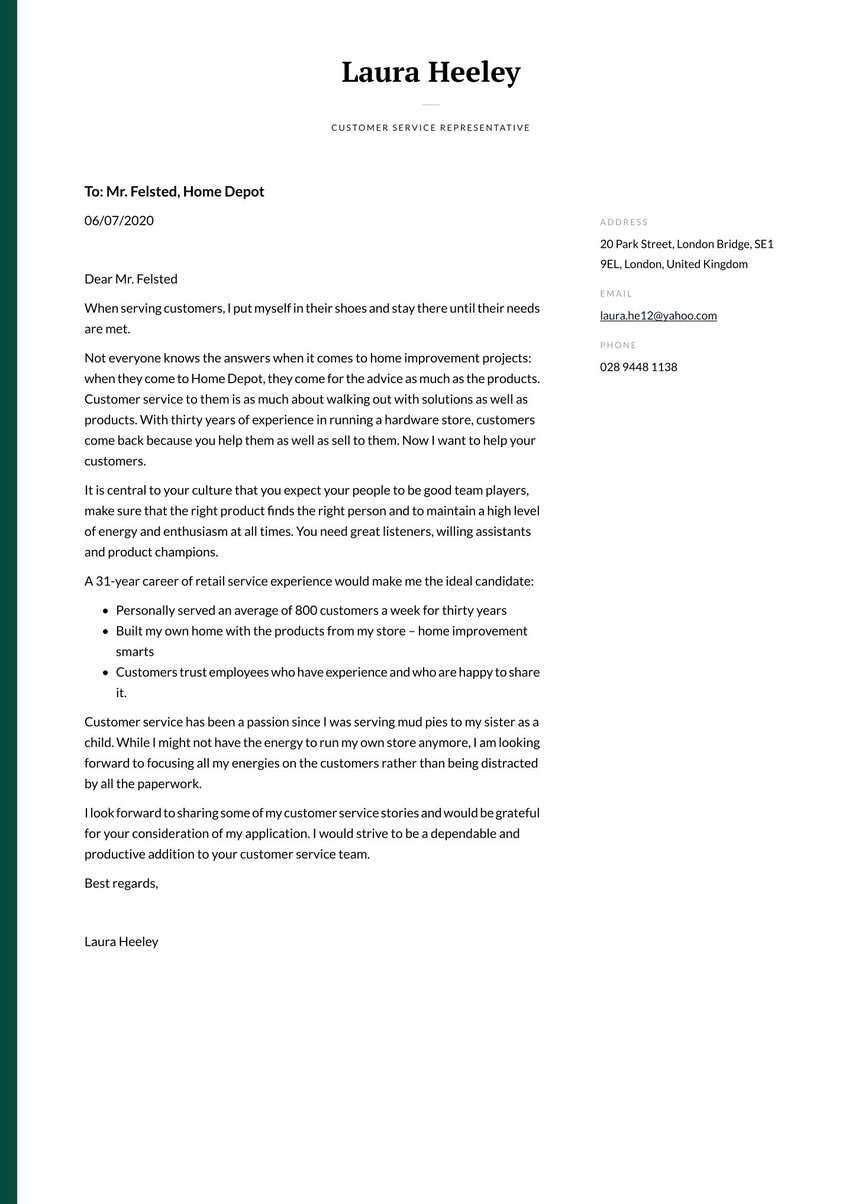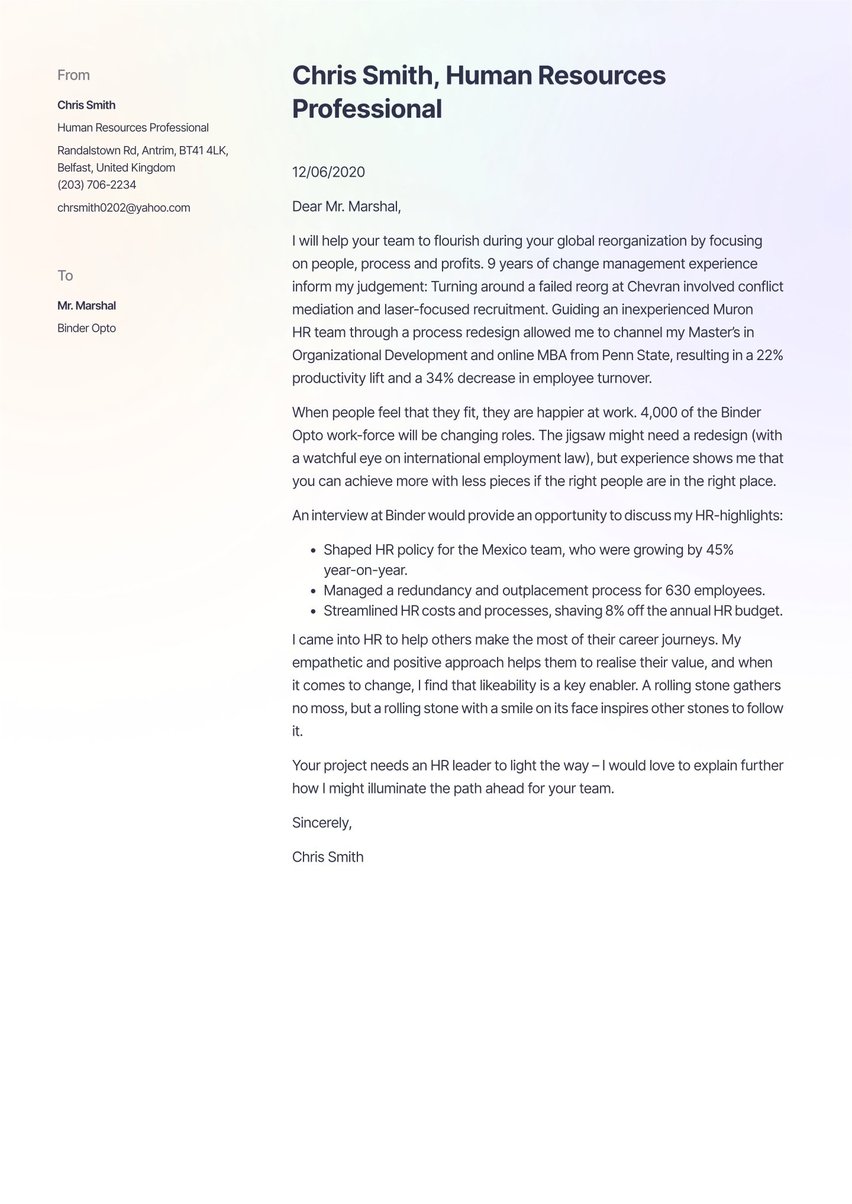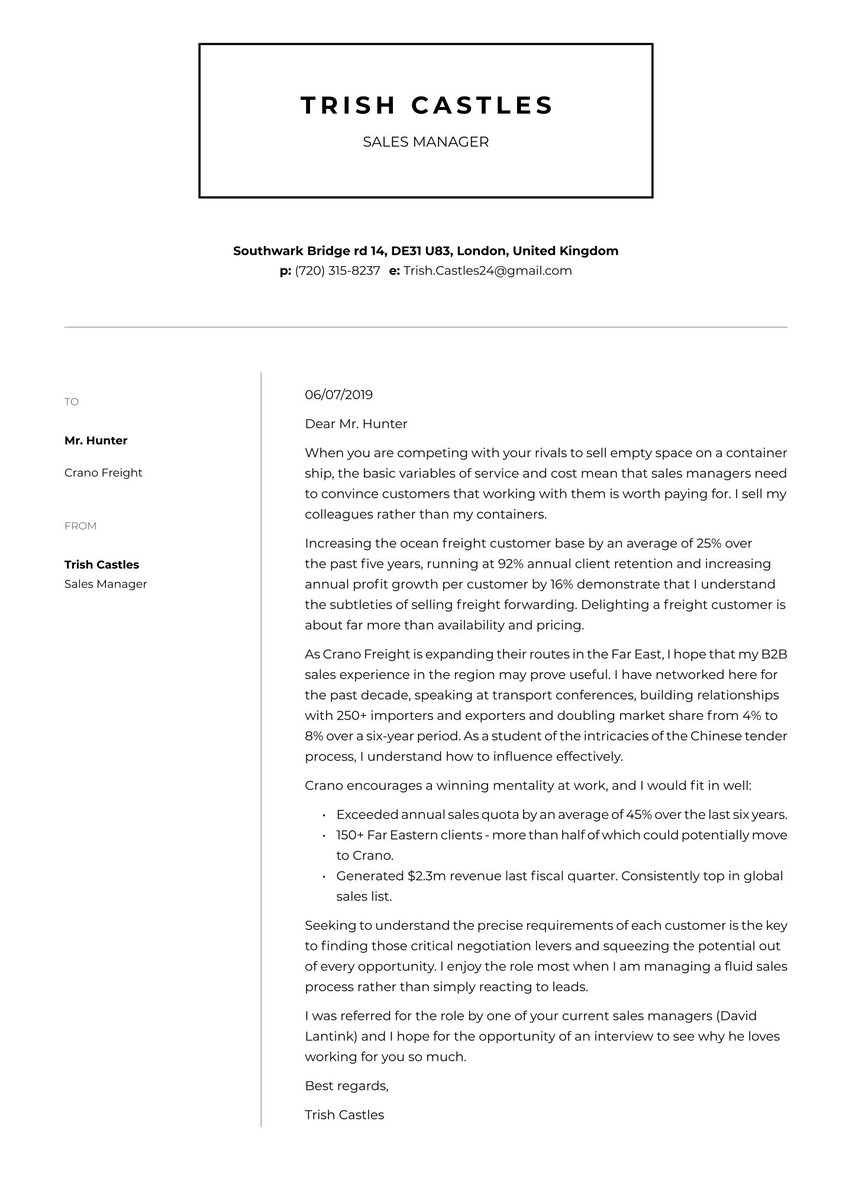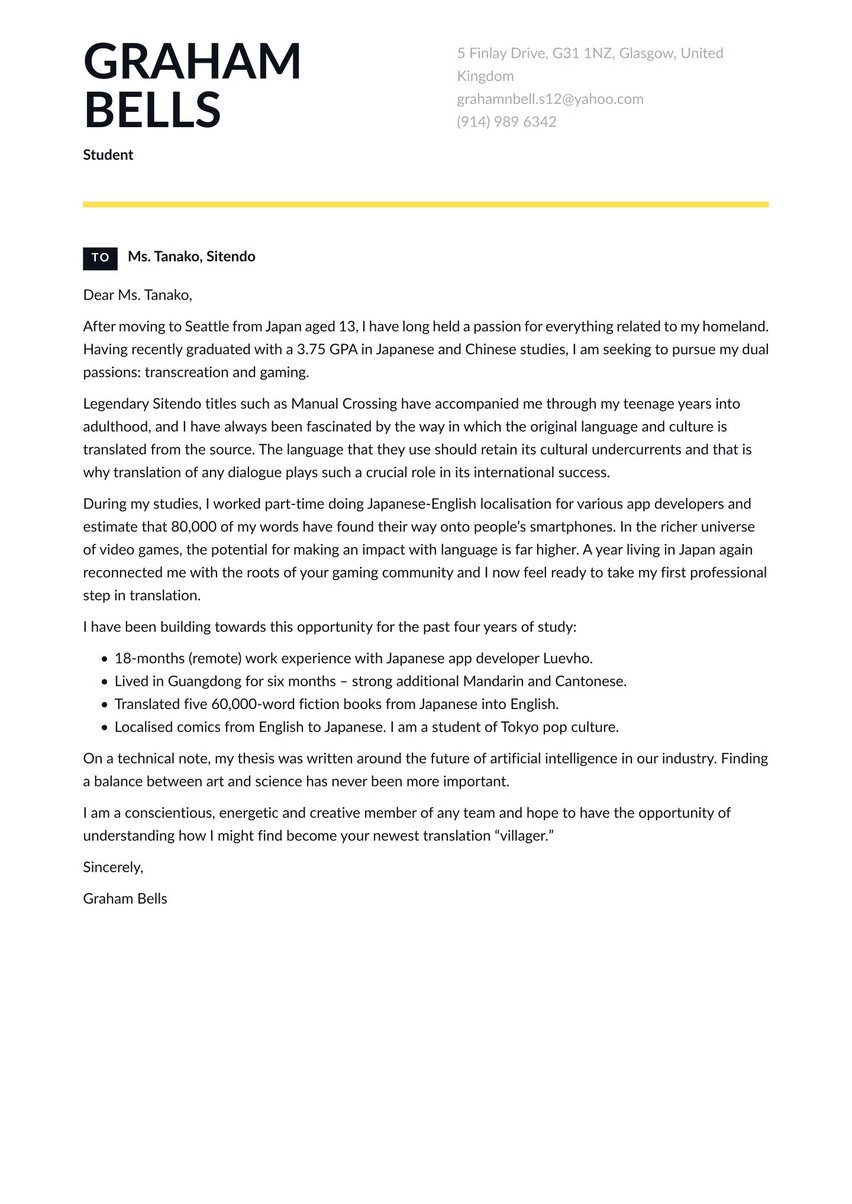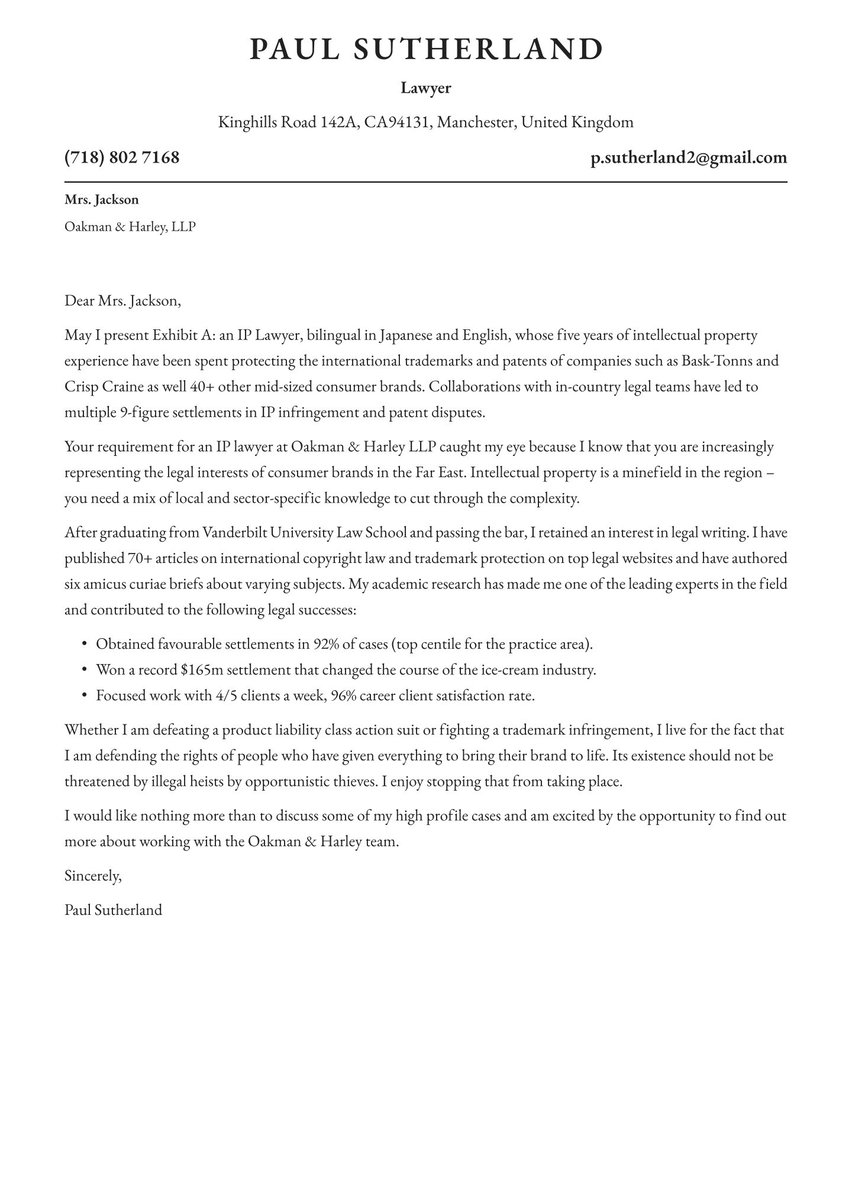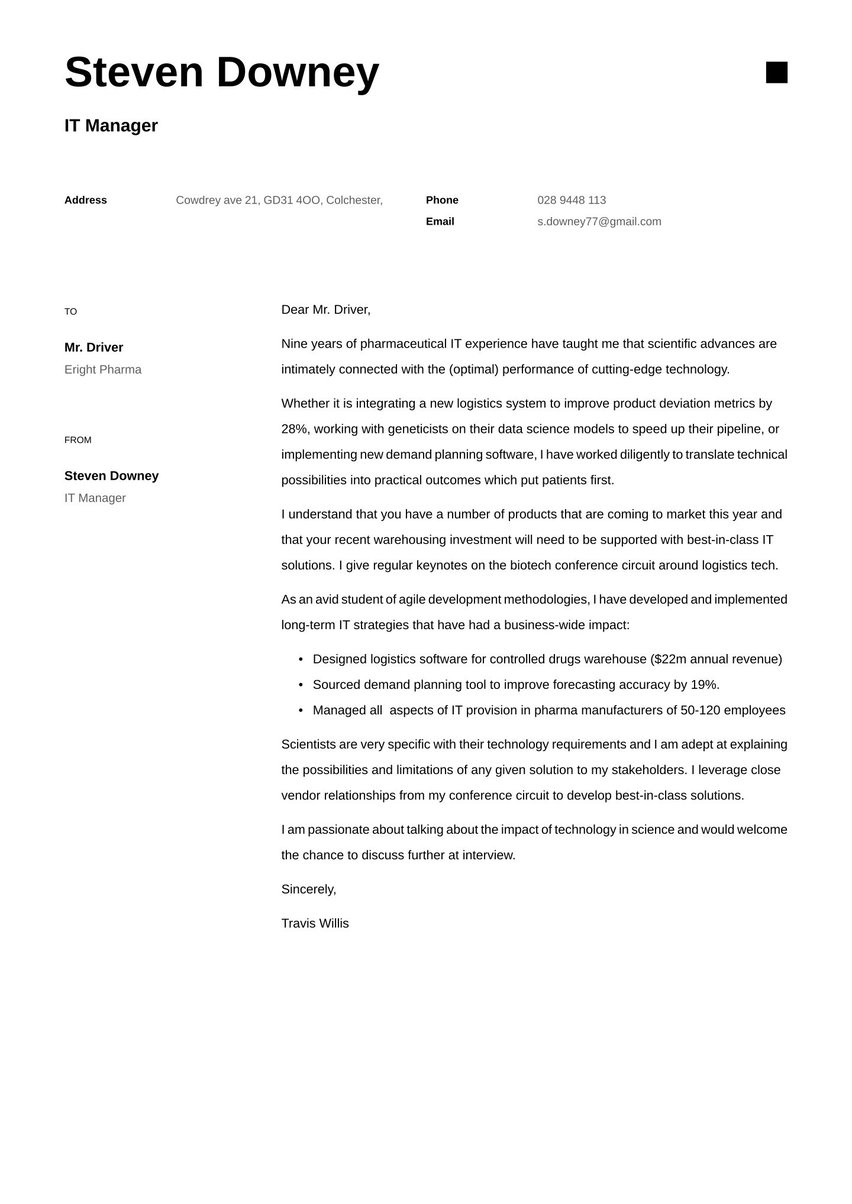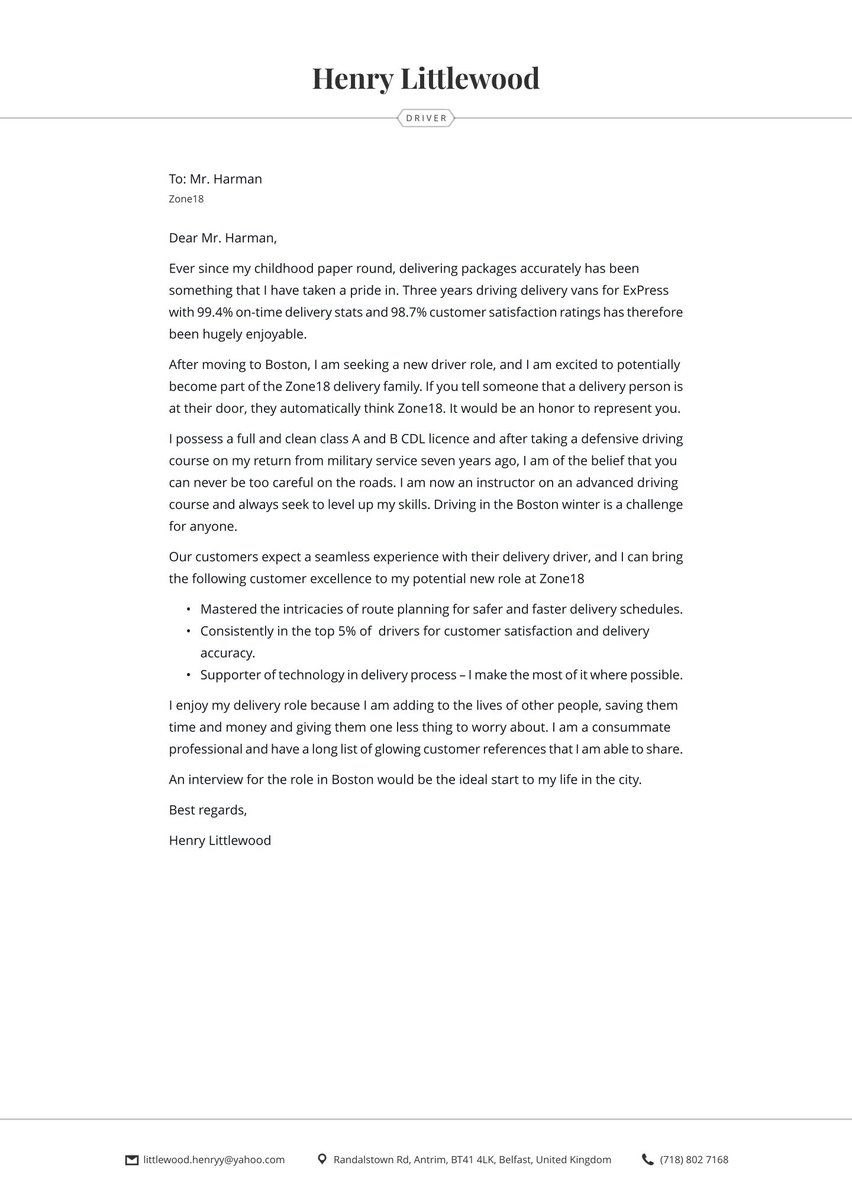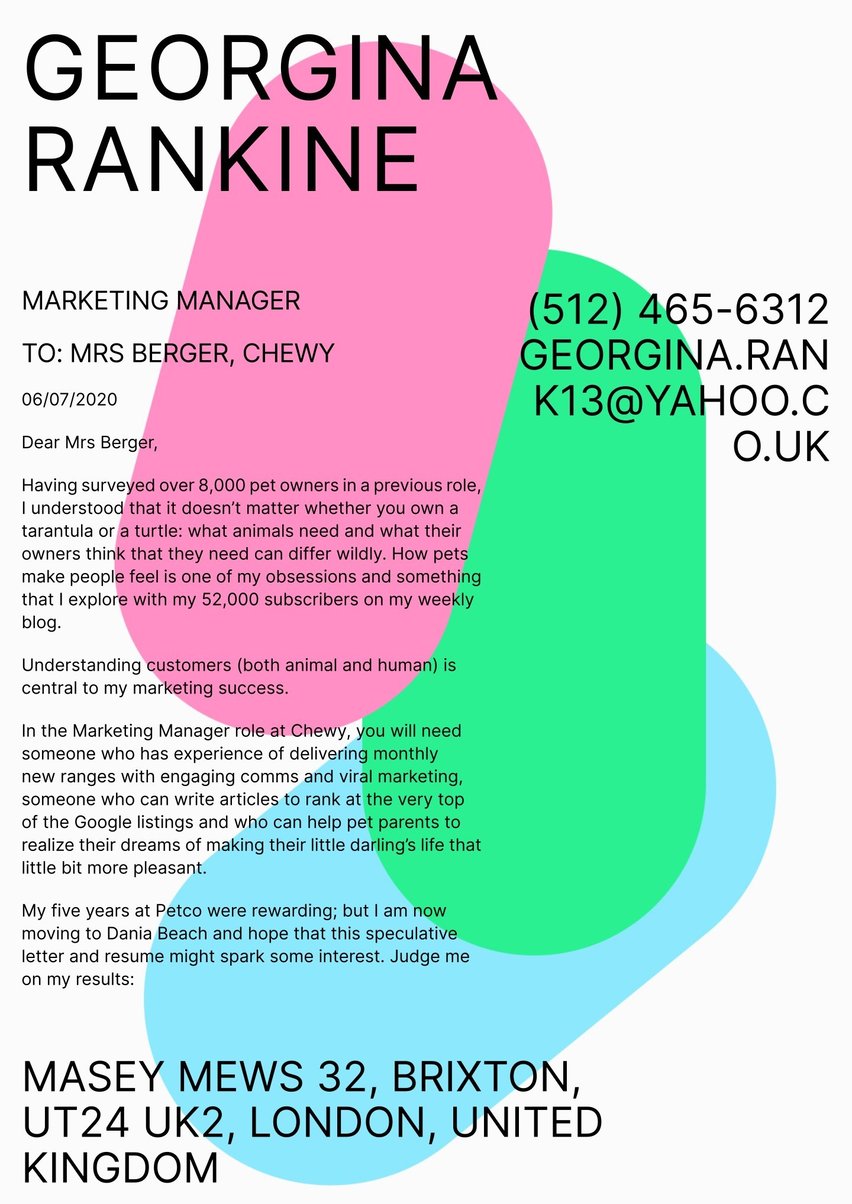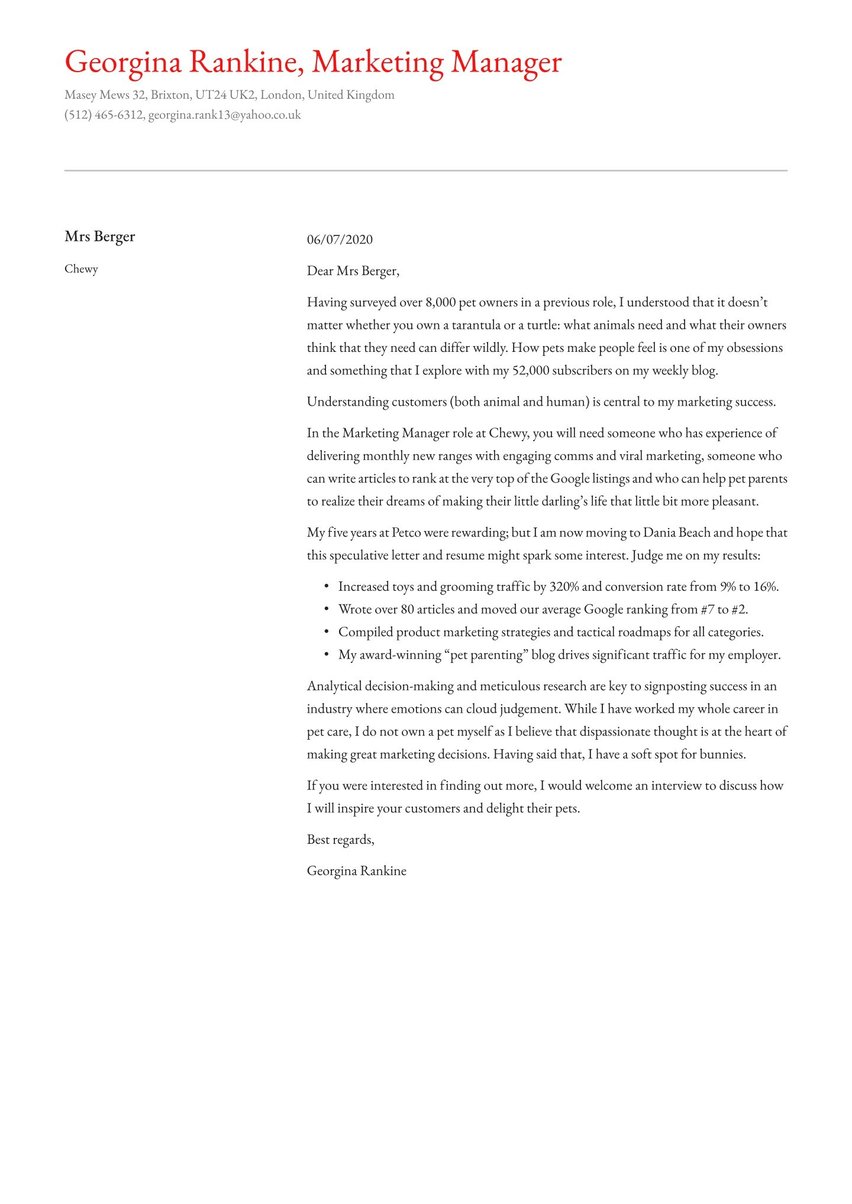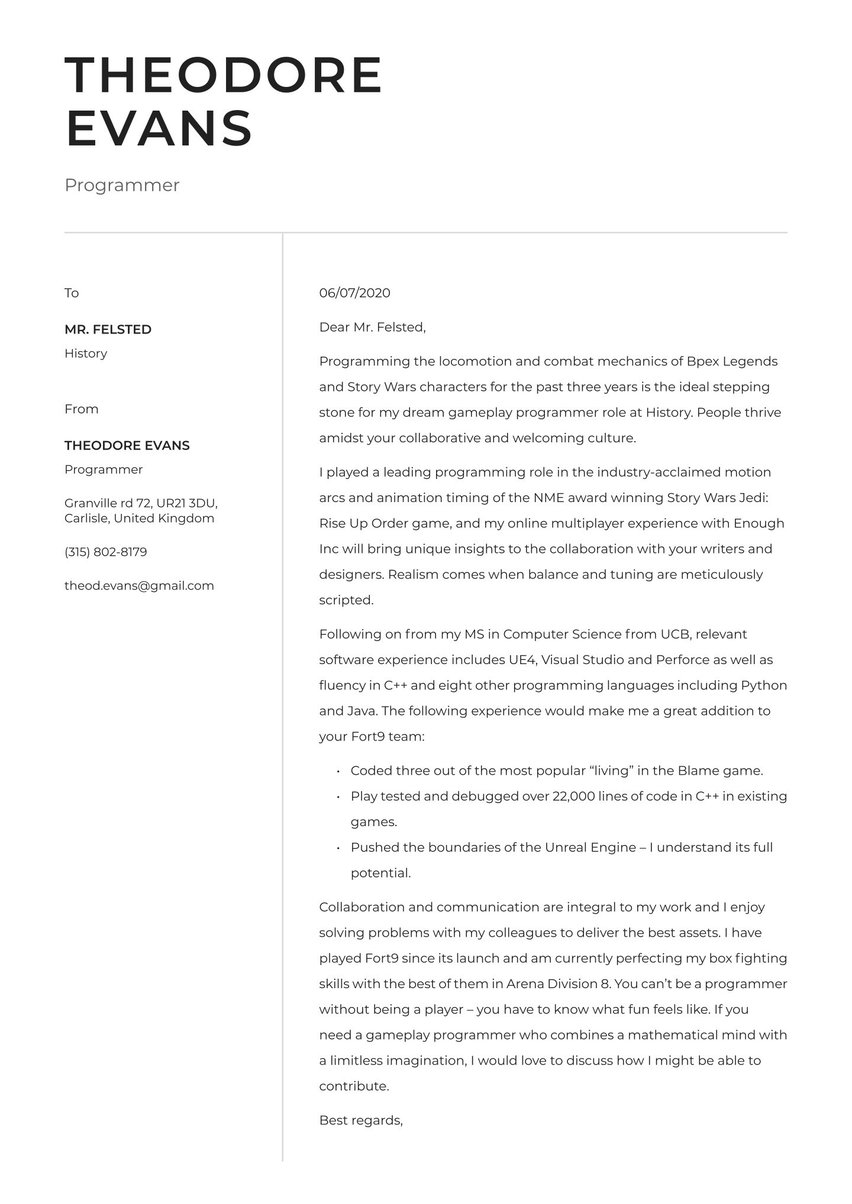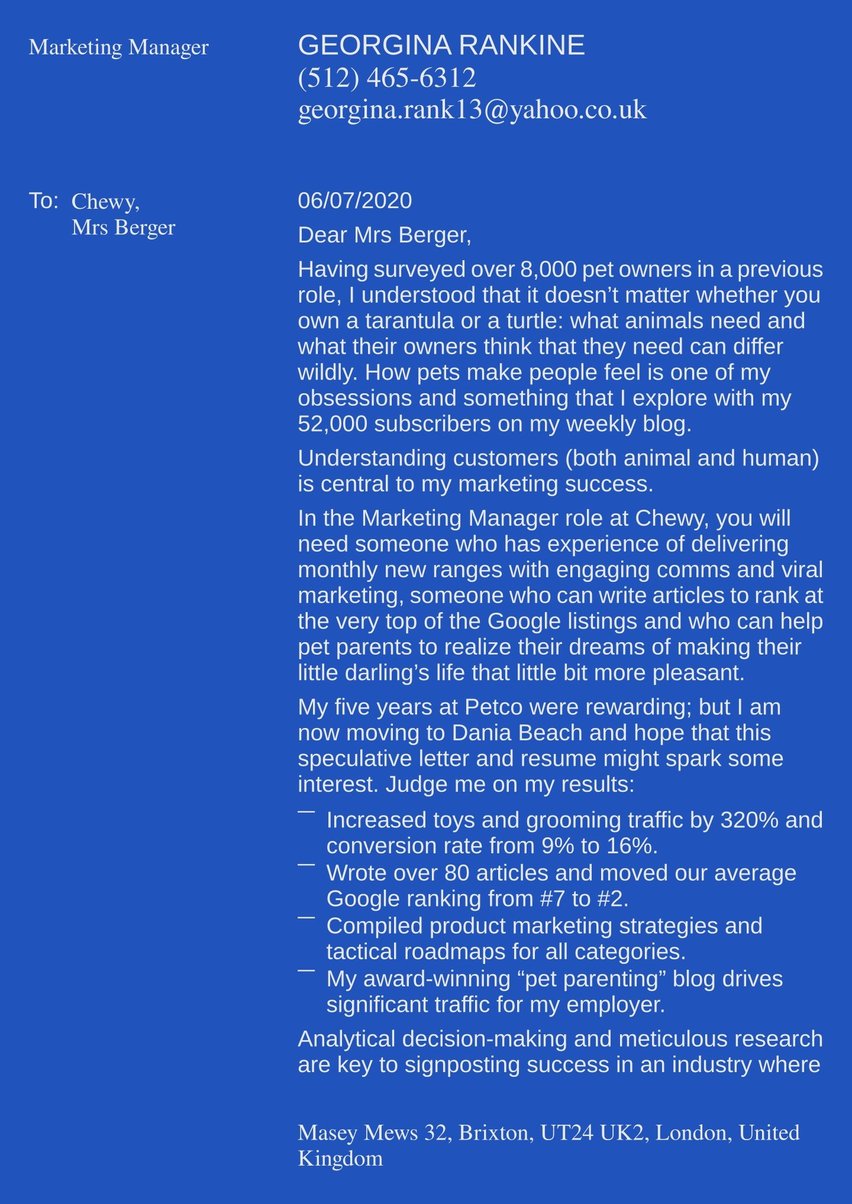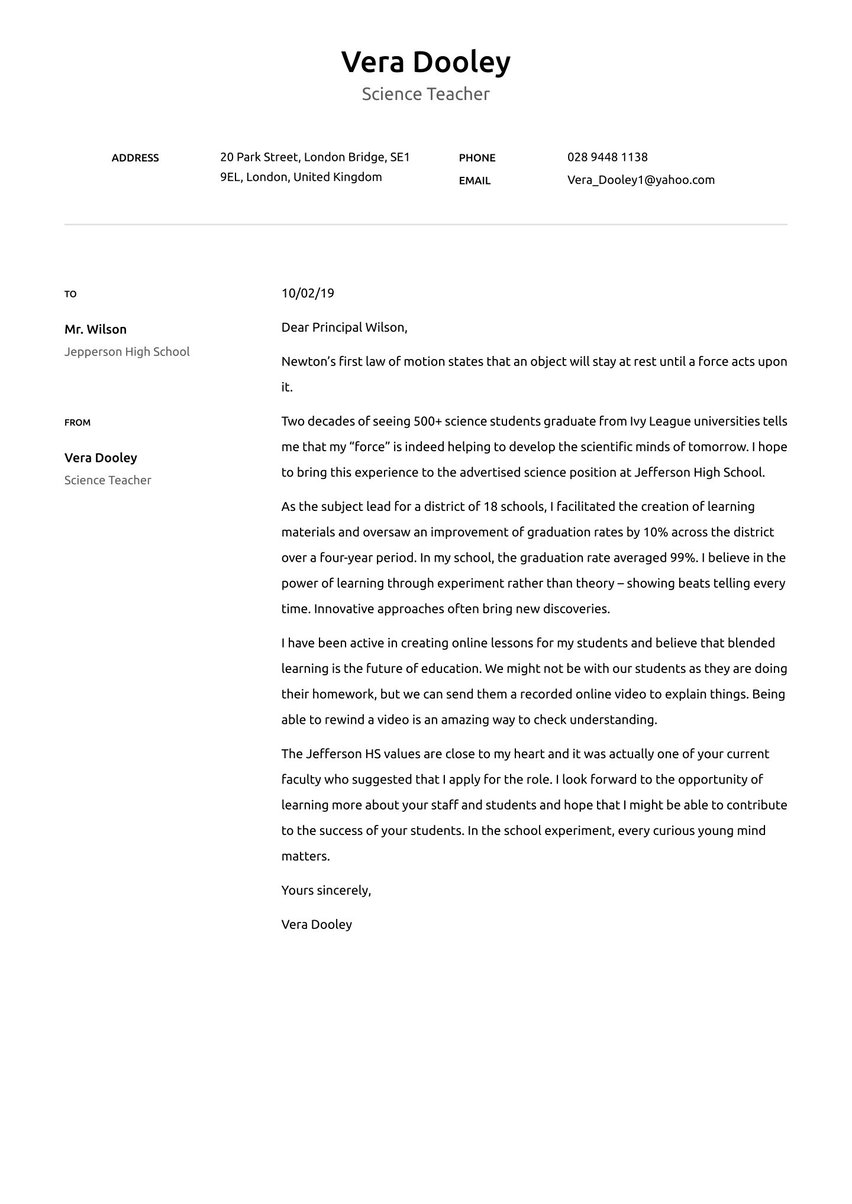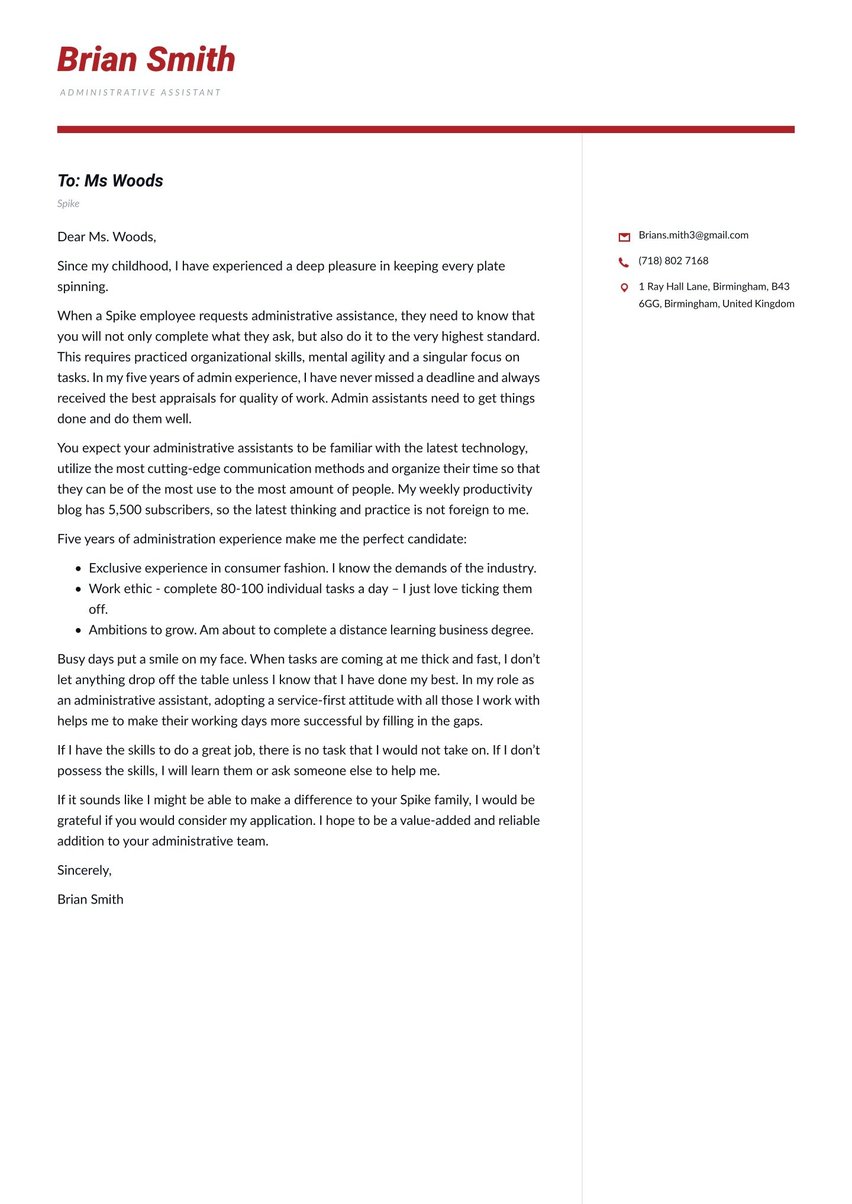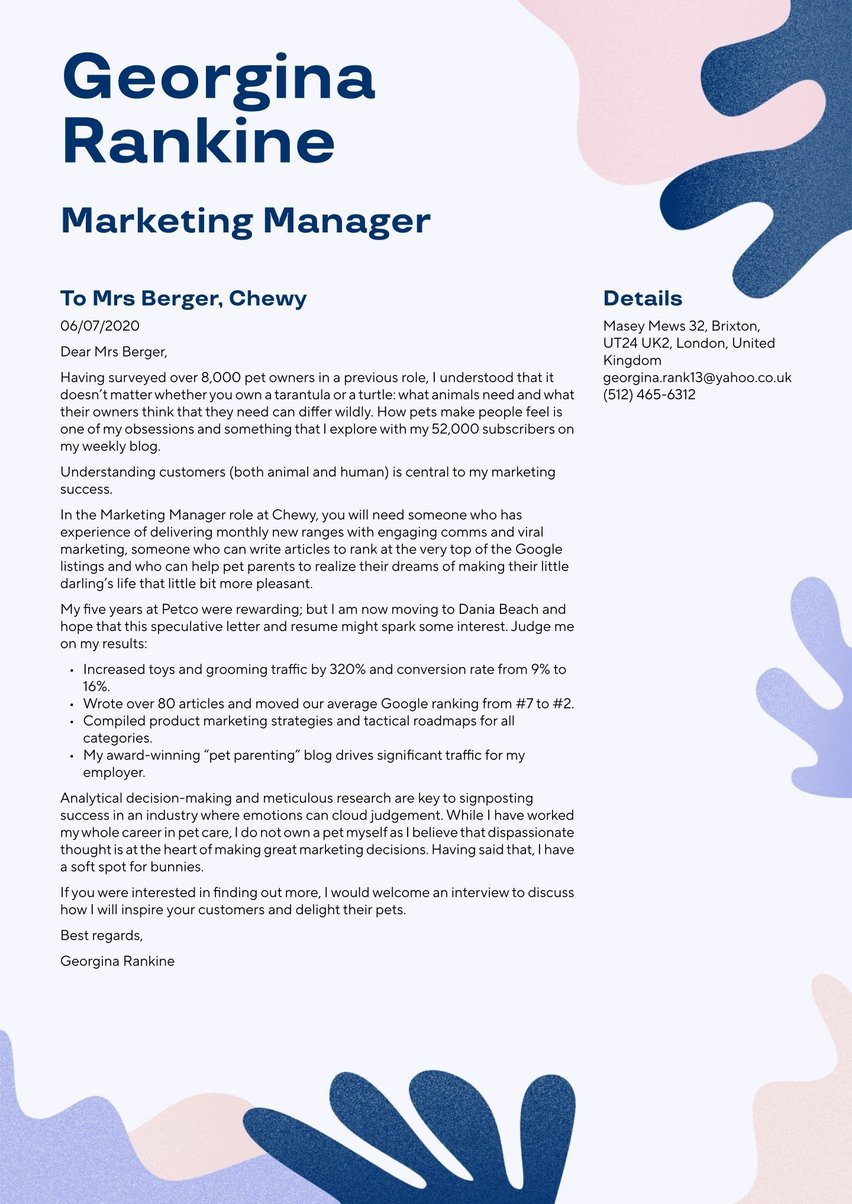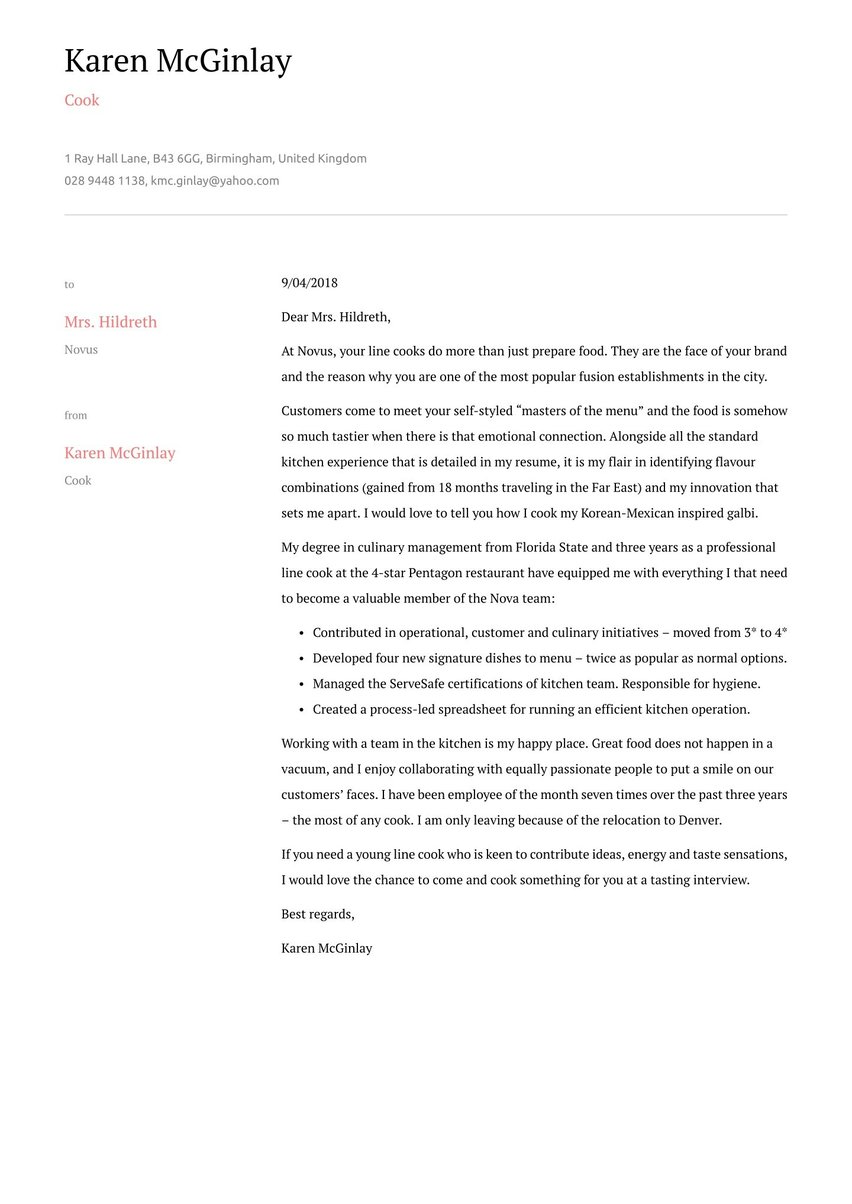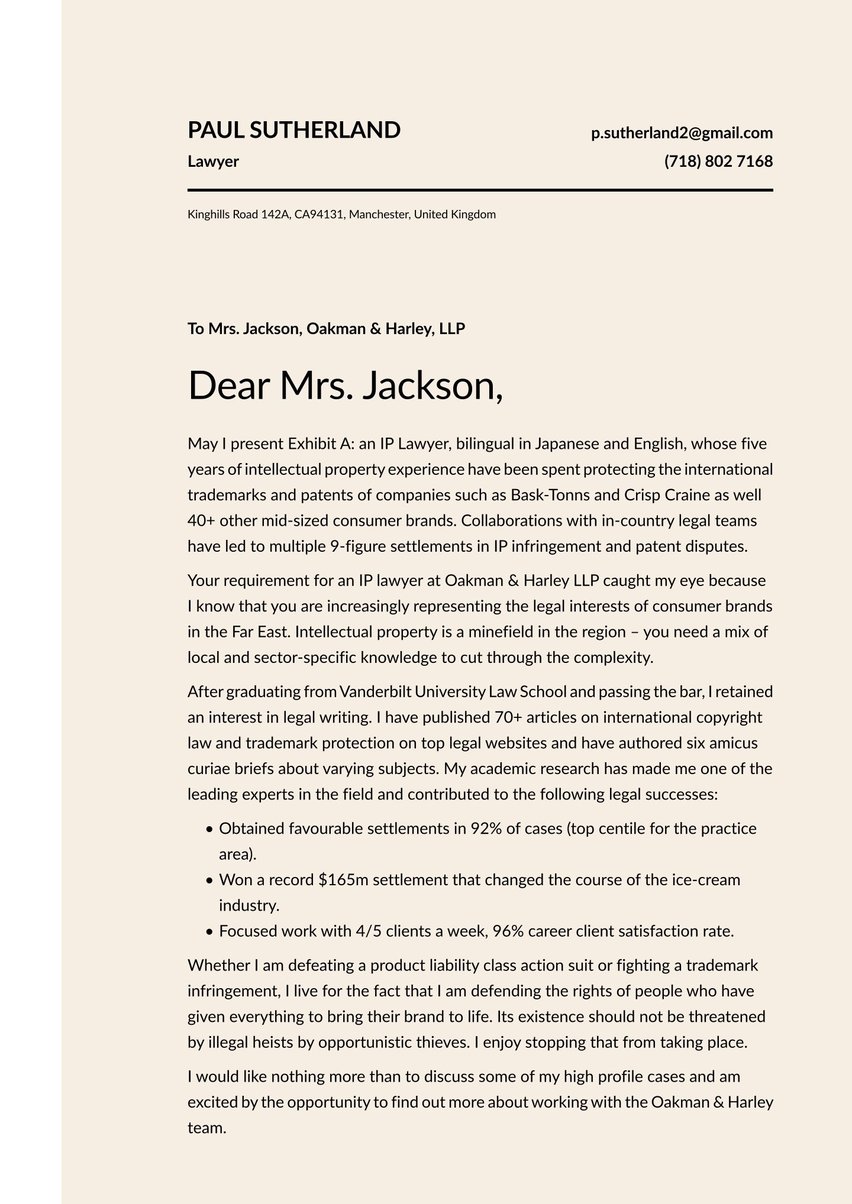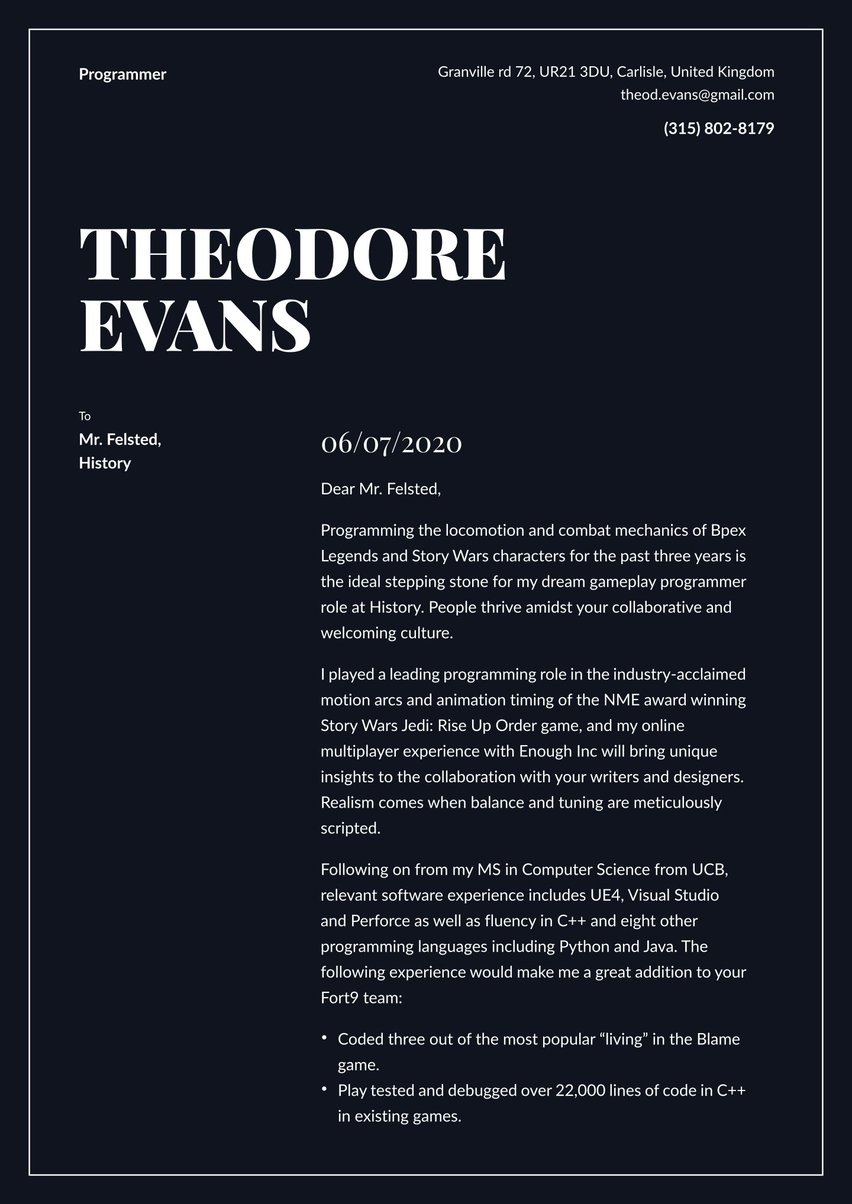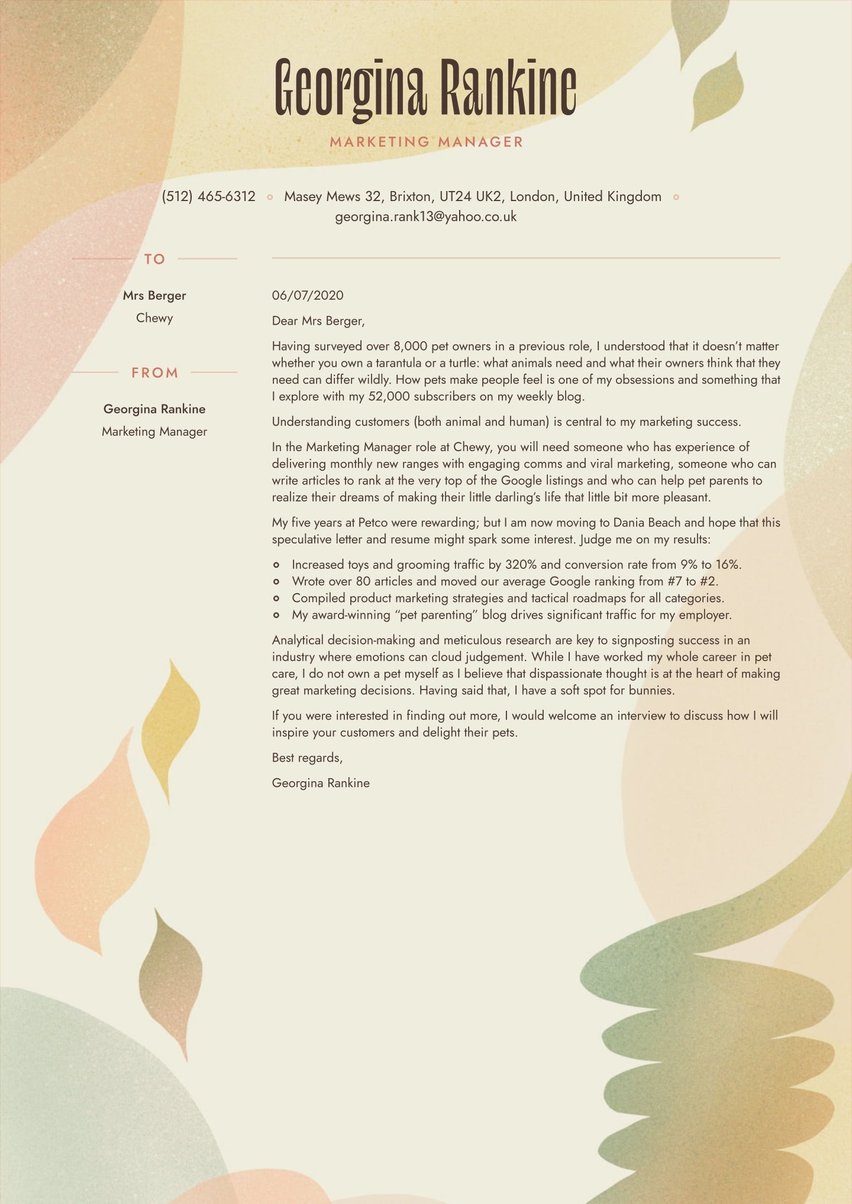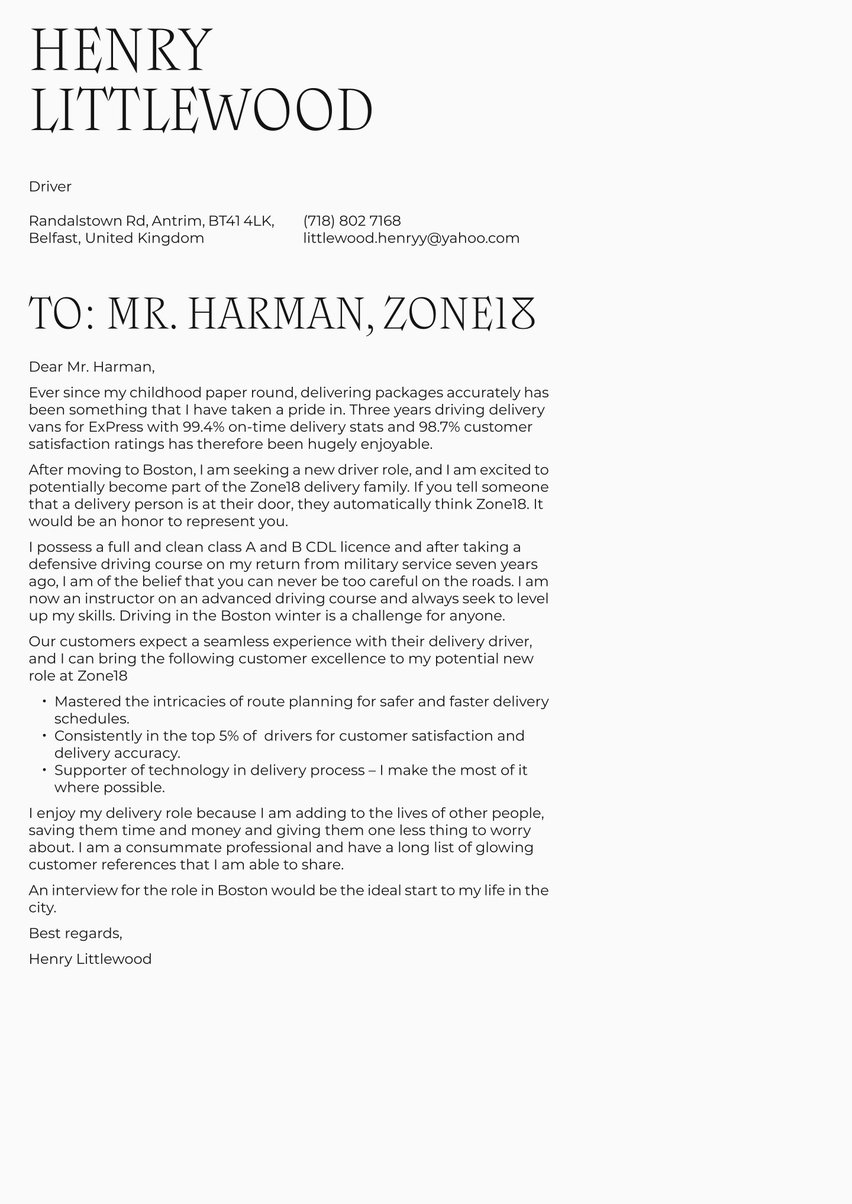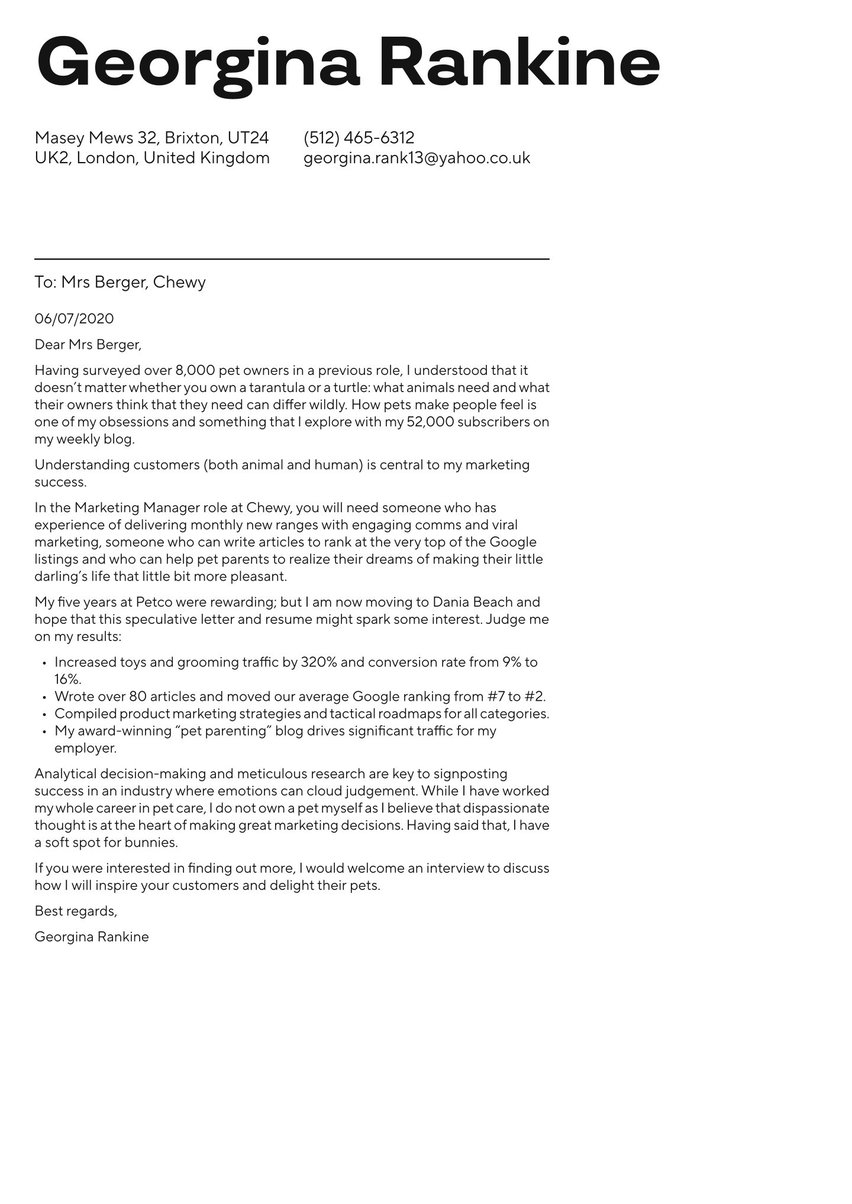Want to dip your toes into the wonderful world of research? Before you can get started, you will need a research assistant cover letter that wows hiring managers. This sector is vastly interesting but also highly competitive. Chances are, you’ve taken your first step out of academia and you’re ready for your next big challenge. So, where should you start?
When writing a research assistant cover letter, you must emphasize your research skills, detailing relevant experiences with data analysis, laboratory techniques, or fieldwork. Highlight your ability to work in a team and communicate effectively, as collaboration is often key in research roles. Explain your understanding of the specific project you're applying for and your interest in the subject matter. Illustrate your problem-solving abilities, demonstrating instances where you've overcome challenges.
Resume.io can help you level up your job search. We have put together a whole bunch of CV-building tools, cover letter examples, and writing guides to give you a fighting chance. Since you will be up against hundreds of recent graduates and workers, you need to give yourself a competitive edge. Within this cover letter writing guide — and expertly-written cover letter example — you can expect to learn the following:
- How to choose the best cover letter structure and what paragraphs to include
- How to maximise the effectiveness of each cover letter paragraph
- What approach and tone to take when writing your cover letter
- The core mistakes you should avoid when writing your cover letter
Most research assistant job postings are in the scientific or accounting and finance sector, according to statistics from Adzuna. Before you start searching for your perfect role, it pays to pick a niche. Choose an area of research in which you have specialist knowledge or prior experience to give yourself the best chance of career success.
Best format for a research assistant cover letter
Structure is everything. As a research assistant, you will already be comfortable following strict rules and guidelines. When writing your cover letter, the same ethos applies. You don’t want to go free-flow. Here are the core elements you need to include in this letter:
- Cover letter header
- Greeting (also called the salutation)
- Cover letter introduction
- Middle paragraphs (body of the letter)
- The closing paragraph of your cover letter (conclusion and call-to-action)
Chances are, you have a load of things you want to tell the hiring manager. Going into this without a proper structure won’t do you any favours. Rather than taking a free-form approach, you should use the above elements to format your cover letter. As you can see from our expert cover letter sample, this strategy allows you to clearly outline your worth.
It doesn’t end there. You can dive deeper into this subject matter within our extensive guide to cover letter writing. When you’re putting together a research assistant application, your approach needs to be meticulous. Hiring managers will expect you to have a keen eye for detail and that should run right through to your cover letter. Laying the document out — as we have outlined above — will make this process straightforward.
Check out our full research assistant cover letter example below for inspiration:
Dear Dr Thompson,
As a film buff, the role of Research Assistant in the Department of Film, Media and Cultural Studies is an ideal fit. I was an intern in your department during my MA study and my dissertation was peer reviewed by your CEO.
During my undergraduate degree, I conducted a study with Professor Ainsley on diversity in literature. I also investigated the impact of social media algorithms on news consumption, where my insights were crucial in formulating the project's direction. Remarkably, I was the only team member who had the privilege of having their contract extended.
In my previous assignments, I developed a diverse array of methodologies to gather and analyse data on revenues, ownership, and market signals of media entities across the UK and the EU. During my Masters degree at Amsterdam University, I had the privilege of collaborating with Professor Luisa Masini on a study examining media bias in various European media organisations. My proficiency in both French and Dutch was instrumental in this multinational endeavour involving academics and students from universities in Amsterdam, Antwerp, Brussels, and Paris.
I had the honour of sharing selected results from my recent research role to potential graduate students and important university affiliates. Beyond academia, I showcased my findings to industry leaders at a prominent media conference, where my presentation received critical acclaim.
I hope you agree that my previous academic experience and my personal interest in this topic would make me a strong asset to your team. I hope to be considered for this position.
Yours Sincerely,
Juliette Rivers
Cover letter header
The cover letter header is by no means the most exciting part of this document. But sometimes, you’ve got to dot the i’s and cross the t’s. Before you start writing the rest of the letter, make sure you have this element in place. Include your full name, phone number and email address. You may also want to add a link to your LinkedIn page.
As a purely functional element of your cover letter, you don’t want to get too creative here. Simply use plain text and insert hyperlinks if you are sending the cover letter digitally. Make sure that this line is easy to read and in a prime position. When a hiring manager looks at your application, you don’t want to give them any reason not to reach out.
It is not essential to include your full home address at the onset of your cover letter, as doing so can potentially pose data protection risks. Instead, it is recommended to provide your address only when you have progressed to the job offer stage. Furthermore, including an inside address is considered outdated and utilizes valuable space within your cover letter, diminishing its effectiveness.
Cover letter greeting
The cover letter greeting is also known as a salutation. It’s how you say hello to a potential employer. Since you’re applying for an academic role, formality is a given. There’s no room for colloquial greetings or over-familiarity. Show the hiring manager that you are serious.
Ideally, you should know the full name of the decision-maker. For example, it might be the lead study author or the project manager when you’re applying for a research assistant role. If you have worked with this professional before or are aware of them, use their title and surname in the greeting. You might write ‘Dear Dr. Storey,’ for instance.
Of course, the identity of the hiring manager could be shrouded in mystery. If it’s not listed on the job posting and you can’t find it online, you need to try something different. While you may have learnt to use ‘To whom it may concern,’ this approach can sound too anonymous and archaic. Instead, go for the friendly ‘Dear research team’ to kick things off.
Cover letter introduction
Hook the hiring manager with an engaging cover letter introduction. This part of your application needs to pique the employer’s interest. As we have already mentioned, you’re going to be up against a plethora of qualified and experienced candidates. Use the introduction to set yourself apart from the crowd and let your personality do the talking.
Your tone needs to be professional and passionate. Consider the research project for which you’re applying. Why does it appeal to you specifically? For example, if you are hoping to land a position in a fitness-based study, do you have experience or knowledge of this field? Draw upon any resources you have and highlight them in your opener.
Researchers are deeply invested in the work that they do and they expect the entire team to adopt the same attitude. For that reason, your introduction needs to share your enthusiasm for the project at hand and the role that you will play. While you don’t want to butter them up too much, letting them know that you’re interested in the sector is vital.
Our cover letter sample below gives you a taste of how to get this right:
Dear Dr Thompson,
As a film buff, the role of Research Assistant in the Department of Film, Media and Cultural Studies is an ideal fit. I was an intern in your department during my MA study and my dissertation was peer reviewed by your CEO.
Cover letter middle part (body)
The middle paragraphs of cover letters are arguably the most important. Within the body of this letter, you have the space to tell a hiring manager exactly why they should hire you. If you have previously worked on research projects, now is the time to mention them. While the majority of the detail will be laid out on your CV, highlight your key achievements.
Hiring managers will be interested in your prior experience. You can use any research you conducted during your master’s or bachelor’s degree. Additionally, you may want to include details of the projects you have worked on as a research assistant too.
Be specific about your role in each of these research projects. For instance, if you managed a large body of data for the team, share the extent of that. On the other hand, you may have created reports and shared them with the departments. If that is the case, let the hiring manager know that you are proficient in this area. Think about what it is that makes you an attractive candidate and focus your cover letter on that.
One way to get ahead of the competition is to refer back to the job posting. You might find that the university or institution included a set of criteria for you to hit. Go through each point and ensure that your cover letter speaks to it in some way. That way, a hiring manager will have good reason to invite you to a formal interview.
Writing the main part of your cover letter can be intimidating, especially if it’s not your forte. If you need some inspiration, take a moment to look at our cover letter example below:
During my undergraduate degree, I conducted a study with Professor Ainsley on diversity in literature. I also investigated the impact of social media algorithms on news consumption, where my insights were crucial in formulating the project's direction. Remarkably, I was the only team member who had the privilege of having their contract extended.
In my previous assignments, I developed a diverse array of methodologies to gather and analyse data on revenues, ownership, and market signals of media entities across the UK and the EU. During my Masters degree at Amsterdam University, I had the privilege of collaborating with Professor Luisa Masini on a study examining media bias in various European media organisations. My proficiency in both French and Dutch was instrumental in this multinational endeavour involving academics and students from universities in Amsterdam, Antwerp, Brussels, and Paris.
I had the honour of sharing selected results from my recent research role to potential graduate students and important university affiliates. Beyond academia, I showcased my findings to industry leaders at a prominent media conference, where my presentation received critical acclaim.
How to close a research assistant cover letter (conclusion and sign-off)
It’s important that you finish strong when writing your research assistant cover letter. The closing lines of your application should pack a real punch. You will have already covered what you plan to bring to the table and why you’re the right candidate for the role. In the conclusion, you should take the opportunity to express your enthusiasm for the project.
Include a solid call-to-action (CTA)!
Don’t be shy. This line urges the hiring manager to contact you and take the next steps. For example, you may write ‘Looking forward to hearing from your team and sharing more about my experience’. You could also opt for something like ‘If you want to know more about my skill-set or experience, don’t hesitate to reach out.’
There’s no place for arrogance when writing your cover letter. Yes, you might fit the criteria perfectly, but that doesn’t guarantee you an interview. Close your letter with a sense of optimism and hope — without making any presumptions. If you’re unsure of how to get the tone just right, you can take a look at our cover letter sample here:
I hope you agree that my previous academic experience and my personal interest in this topic would make me a strong asset to your team. I hope to be considered for this position.
Yours Sincerely,
Juliette Rivers
Research assistant cover letter with no experience
Breaking into the research sector? If you’re a recent graduate or you’re completing your degree, you might not have a wealth of project experience to use. Don’t panic. You can still craft an effective cover letter. Here are some of the elements to include:
- Information about your degree subject and modules
- Why you are interested in the research project or joining the team
- The research skills you picked up during your education
- Your passion for the research field and any insights you have
- The approach your take when you work as part of a team
You’re new to the sector and that’s okay. Everybody has to start somewhere. Research assistant positions are an ideal stepping stone for recent graduates. Within this type of role, you will learn how to work as part of a wider research team, valuable analytical skills and the formal processes. Express an interest in gaining these skills on your cover letter.
Mistakes to avoid in a research assistant cover letter
If an error creeps into your research assistant cover letter, it can cast a shadow of doubt over your entire application. Hence, it is crucial to allocate sufficient time for thorough proofreading, as even a minor mistake can lead employers to question your attention to detail.
- Possessing strong spelling and grammar skills is paramount for a research assistant. Therefore, approach the proofreading process meticulously to ensure flawless content before submitting your cover letter.
- When writing about the specific role, avoid the temptation to copy and paste from another letter that may give the impression you are applying elsewhere.
- Strike a balance between professionalism and informality. While it is essential to maintain a professional tone in all written and verbal communications, refrain from being overly conversational in your cover letter.
Key takeaways
- Your research assistant cover letter should follow a formalised structure. Take note of the core elements you need to include.
- Keep things simple by using our field-tested cover letter templates.
- This is an academic position. That means that the language needs to be formal yet approachable. Get the tone right.
- Share any details of previous projects you’ve worked on or studies you conducted during your time at university.
Other related cover letter examples:

